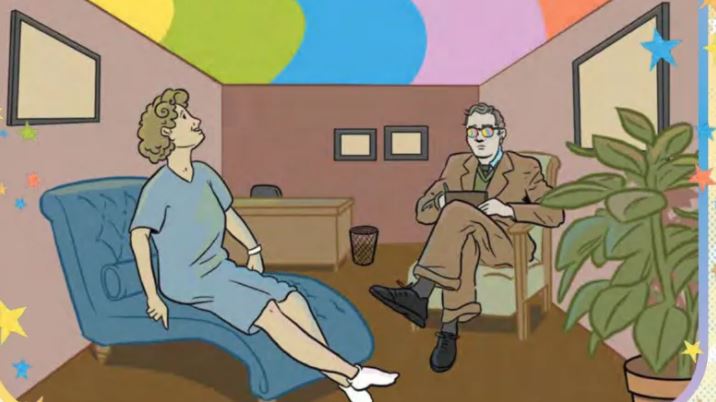
New graphic novel depicts famed history of LSD research in Sask.
Novel based on research done by U of S professor, Canada Research Chair, Dr. Erika Dyck (BA'98, MA'00)
By Cory Coleman | CBC NewsA graphic novel is bringing Saskatchewan's history of LSD research alive.
Wonder Drug: LSD in the Land of Living Skies uses comic book-style illustrations and text to depict groundbreaking research done in Saskatchewan during the 1950s involving the use of lysergic acid diethylamide — more commonly known as LSD — as a medical treatment for illnesses like depression and alcoholism.
The psychedelic was also used to gain a better understanding of what people with schizophrenia were experiencing.
The story follows Anglo-Canadian psychiatrist Dr. Humphry Osmond through his journey of psychedelic research, much of which was conducted at the Weyburn Mental Hospital or — at times — in his own living room.
The graphic novel was based on research done by Erika Dyck (BA'98, MA'00), a professor and Canada Research Chair in the History of Health and Social Justice at the University of Saskatchewan.
"It's completely flattering and I feel very honoured to have been part of this process," she said in an interview with CBC.
Dyck has been studying the history of psychedelic research in Saskatchewan for about 20 years, but it wasn't until she moved from Saskatchewan to Ontario that she became interested in that history.
"When I was looking into these really exciting experiments that were done in a variety of places in Canada, I found this cluster of experiments in Saskatchewan," she said.
"I was led back to my home province by a real interest in what was happening here in Saskatchewan in the 1950s as the province was engaged in reforms aimed at creating what we now know as Medicare and how that fit with these really exciting and cool therapies that were being explored in psychiatry."
In the 1950s, Dyck said many medical professionals — including Osmond — were drawn to Saskatchewan "by the allure of what seemed to be a kind of research freedom."
She said they could test new ideas and link them directly with policy reforms, work with interdisciplinary colleagues and "really sort of think outside of the conventional boundaries of modern medicine and science."
'Always something new around the corner'
Despite studying the works of Osmond for about two decades — along with meeting his children and grandchildren — Dyck said she still hasn't learned everything about the psychiatrist.
"I am still utterly amazed as I keep learning new things about this man who I've read hundreds and hundreds of pages of records and documents about already, but there's always something new around the corner."
She said one characteristic that really stands out is his "dedication to trying to understand the plight of patients."
Osmond felt that there was a disconnect between health-care providers — including psychiatrists — and patients who had been institutionalized for a long time and had trouble communicating what they were experiencing, according to Dyck, so he experimented with unconventional methods as a way to learn more about his patients.
"That really drove his research, so he wasn't like some of the other psychedelic crusaders we might think of, like for him it [was] much more of a means than an end."
Read the full article at https://www.cbc.ca.

